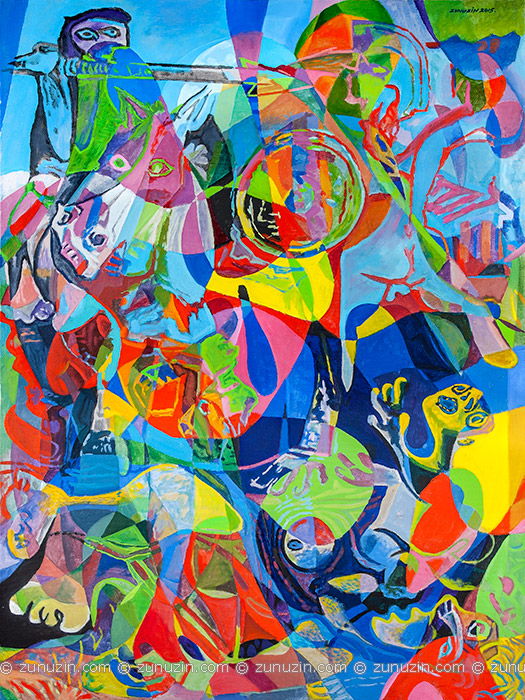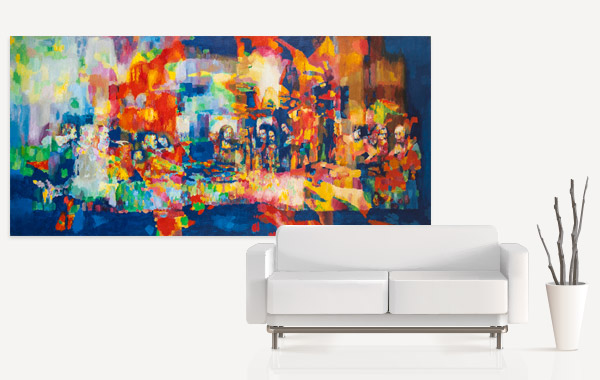Print information
- Artwork printed by EPSON Stylus Pro 7880 (Epson Ultra Chrome K3 Vivid Magenta) on canvas.
- Limited edition prints of 100.
- Each limited edition artwork will be individually printed, signed, dated and numbered by the artist Vladimir Zunuzin.
- Art Prints packaged in a plastic tube.
- © zunuzin.com watermark is only used online and does not appear on your print.
Shipment and payment
- Free worldwide shipping with tracking.
- Will usually ship within 3-5 business days.
- We send prints to all countries via Registered Airmail, they usually arrive within 35 working days to destinations within Western Europe and about 45 working days to destinations outside Europe.
- Payments by Paypal or 2Checkout.
Tags
History of the Rape of the Sabine Women by Pablo Picasso

Pablo Picasso
"Rape of the Sabine Women"
Picasso’s series The Rape of the Sabines was executed at the height of the Cuban Missile Crisis in the autumn of 1962. The works capture the showdown between East and West and the very real threat of the annihilation of humanity in a Third World War and nuclear Armageddon.
The first painting in the series The Rape of the Sabines is dated 24 October 1962. It was painted ten days after American reconnaissance planes first recorded the construction of Soviet missile bases in Cuba. In Picasso’s history paintings contemporary events are reflected through the filter of classical mythology and a dialogue with Old Masters. Picasso borrowed the composition and figures for this series from Nicolas Poussin’s Rape of the Sabine Women 1637–8 and Jacques-Louis David’s The Intervention of the Sabine Women 1799. The Roman Empire in his variationsrepresents all empires, the Napoleonic, the Nazi, and the contemporary Russian and the American empires of the Cold War, and is depicted as grotesque and barbaric.
Picasso’s conception of war and its effects are clearly focused on the suffering of the victims, in particular of women and children. He simplifies the paintings in order to concentrate on the brutality of death by the sword. The soldiers, their weapons and their horses are enlarged and are given prominence as a symbolic representation of the power of the armies of the state over individuals. The soldiers’ footsteps on the chest of an infant and the anguish of the mother are shown through the deformity of their helpless poses. Via








